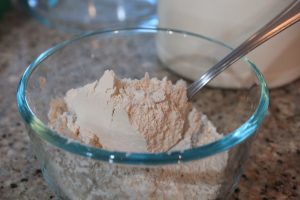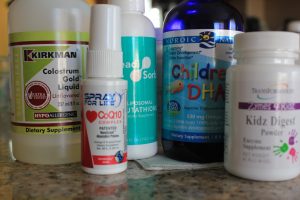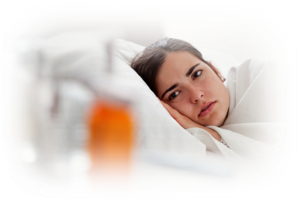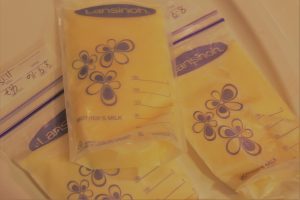
The three diets I have recently researched for Jessica and helping with IBD are anti-candida diet, SCD diet, and autoimmune paleo diet. It has taken me a long time to write this blog – today is October 25, 2018 and I had wanted to write this over the summer—better late than never. It was just so overwhelming all the details of these diets and I really wanted to have synthesized the diets very well. I will do my best to present each diet and what is allowed and not allowed on each.
I’ll start with the anti-candida diet. I learned about this first from the author Ann Boroch who wrote The Candida Cure which is where I learned the most about this diet. I followed this diet for myself when I started my own healing journey in 2009. I had candida and many symptoms from it like brain fog, waking up feeling like I was hung over after eating rice, depressed immune system among many others. Just to give you a very brief history or definition of candida hear what Dr. Jack Tips says about it, “Candida albicans starts out as a microorganism know as yeast. Actually it is more accurately defined as ‘yeast like’ microorganism. Yeasts are single-cell plants that inundate this planet, meaning they’re everywhere. But unlike plants, yeasts do not synthesize sunlight and contain no chlorophyll. They ferment sugars and carbohydrates for their life processes instead.” Pg. 11 Conquer Candida and restore your immune system.
Candida is normal for everyone to have on their skin, and inside the body. It can become a pathogen and it does weaken the immune system, but the immune system has to be weak for candida to overgrow in the first place.
Our doctor told us, “We have to kill the yeast.” After our appointment where Jessica’s lab showed very high levels as dysbiotic flora as well as high levels of yeast itself. She believed that if we could kill the yeast maybe we could lower the lactoferrin levels which may have been caused by the yeast and not true IBD. A research study entitled Inflammation and gastrointestinal Candida colonization said, “Candida organisms commonly colonize the human gastrointestinal tract as a component of the resident microbiotia. Their presence is generally benign. Recent studies, however, show that high level Candida colonization is associated with several diseases of the gastrointestinal tract. Further, results from the animal models argue that Candida colonization delays healing of inflammatory lesions and that inflammation promotes colonization. These effects may create a vicious cycle in which low-level inflammation promotes fungal colonization and fungal colonization promotes further inflammation.” The bottom line is that when inflammation is present candida colonization appears to exacerbate inflammation. Pg. 2 of same study above. So here is the bonafide research to prove what our doctor was telling us.
I was successful in getting rid of candida and I do feel so much better but there are times even though I am eating really healthy where my tongue gets a little white, I feel a little more brain fogged and tired and I know candida may have flared internally. The situation is so much worse for my daughter and could contribute to more inflammation and a destructive cycle could continue and candida contributes to leaky gut too.
I did several things besides diet to lower candida overgrowth in my body including using the well-known drug Diflucan and stomach herbs but I mainly got rid of it through diet. Here is the candida diet protocol.
Candida food guide –
Foods to eliminate:
Meats: bacon, canned tuna, hotdogs, processed or packaged meats, sausages
Grains: breads (unless wheat, dairy, yeast, and sugar free), cereals (unless wheat, dariy, and sugar free), corn (tortillas, popcorn, chips), crackers (wheat or white), pasta (brown rice and spelt ok), pastries, tapioca, white rice, white flours, wheat
Vegetables: corn, peas
Beans and Legumes: fermented soy products (only if you find they exaserbate your symptoms), peas
Nuts and seeds: cashews, peanuts
Oils: canola, corn, cottonseed, peanut, processed oils, soy
Dairy: all chesses (cottage and cream included), buttermilk, cow’s milk, goat’s milk, ice cream, margarine, sour cream, yogurt
Fruits: all citrus (except lemon, limes, and grapefruit), all juices (sweetened and unsweetened), all dried fruits (apricots, figs, dates, raisins, and cranberries
Beverages: alcohol, caffeine teas (black, earl grey), coffee, fruit juices, sodas (diet and regular)
Condiments: vinegars, ketchup, gravy, jams and jellies, mayonnaise (unless made with apple cider vinegar), mustard (unless made with apple cider vinegar), pickles, relish, salad dressing (unless it doesn’t contain sugar and made with unsweetened rice vinegar, or apple cider), sauces with vinegar and sugar, soy sauce and tamari sauce, spice that contain yeast, sugar, or additives
Sweeteners: artificial sweeteners (aspartame, maltitol, mannitol, saccharin, sorbitol, and sucralose), barley malt, brown rice syrup, corn syrup, dextrose, maltodextrin, fructose, honey, maple syrup, molasses, raw or evaporated cane juice crystals, white sugar
Other: candy, cookies, cake, donuts, gum, mints lozenges (unless sweetened with stevia), fast or fried food, muffins, pizza, pastries, processed food
Food to enjoy:
Animal protein: beef, lamb (grass fed, 3-4 ounce servings once a week), chicken, eggs, fish, turkey
Grains (whole unrefined only): amaranth, brown rice, buckwheat, millet, quinoa
Vegetables: all especially dark leafy greens and cruciferous kale, collard, broccoli, cauliflower
Beans and legumes: all (no peas or fermented soy products)
Nuts and seeds (raw unroasted only): almonds, brazil nuts, chestnuts, hazelnuts, macadamia, nut butters (can be roasted), pecans, pumpkin seeds, sesame seeds, sunflower seeds, walnuts
Oils: coconut oil, flaxseed oil (not for cooking), grapeseed oil (can use for cooking), olive oil (can use for cooking), sesame oil (can use for cooking)
Dairy: butter, clarified butter (ghee)
Fruits: apples, avocado, berries, coconut, grapefruit, lemons, limes (limit fruit to one piece per day, avocado can be in addition to the one fruit a day
Condiments; apple cider vinegar, dry mustard, fresh herbs (basil, parsley), mayonnaise (made with apple cider vinegar only), pepper, rice vinegar (unsweetened only), sea salt, spices (no additives)
Beverages: green tea, herbal teas, unsweetened mineral water, unsweetened almond milk
Sweeteners: stevia
Other: carob, salsa (without sugar)47 This list is adapted from The Candida Cure by Ann Boroch pg. 73-79
In this diet Ann includes many grains including brown rice, millet, and quinoa, dairy in the form of butter. This is really pretty excellent for candida and worked for me but may not be enough for IBD for my daughter.
SCD Diet – from research study Diet and Inflammatory Bowel Disease
Include Avoid
Grains None All cereal grains (oats, wheat, rye, rice, millet)
Fruits all but canned or frozen fruits None
Vegetables all but canned or frozen vegetables potato, yam, corn
Protein all others processed, canned, or smoked meats
Nuts/Seeds/legumes lentil, split pea most except white navy beans (soak for 12 hrs.)
Dairy lactose free ALL others
Beverages wine milk, instant tea, instant coffee, soybean milk, beer
Other saccharin, honey, butter chocolate, margarine, corn syrup
Reference: Bottschall E. Breaking the Vicious Cycle: Intestinal Health Through Diet. Baltimore, Canada: Kirkton Press; 2012
The way this diet is listed in the research above does not convey the difficulty of this diet. Author Elaine Gottschall says that the strictness of this diet cannot be overemphasized or minimized. It requires vigilance and says its unwise to undertake unless you are willing to follow with fanatical adherence. Pg. 67. Elaine describes the diet in great detail which takes nine pages to describe in detail. The main things I remembered is the strictness of no canned veggies, no grains, no potatoes, or dairy except 24 hour fermented yogurt. There are four things on the diet that Jessica cannot eat so this was super confusing for me. Jess does not eat ANY dairy even fermented dairy, NO Eggs which are allowed on this diet, NO honey which is allowed on this diet, and for a short time she was reacting badly to almonds which are allowed on this diet. I found a very detailed list that you can print out at https://www.siboinfo.com/uploads/5/4/8/4/5484269/scd_food-list.pdf which gives even more detailed list of ingredients to eat or not eat of which astragalus is not permitted. Astragalus is an herb from the bean family used to boost the immune system. I do well on it and so has Jess through the breast milk so there will have to be a lot of testing going on for us.
AIP (Autoimmune Protocol)
A research study entitled, Efficacy of the Autoimmune Protocol Diet for Inflammatory Bowel Disease used Angie Alt’s 6 week program called “SAD to AIP in 6) which means standard American diet to autoimmune protocol in 6 weeks. The diet basics consist of eliminating: grains and pseudo grains like quinoa and amaranth among others, beans and legumes, dairy, refined/processed seed and vegetable oils, eggs, alcohol, food chemicals, refined and alternative sweeteners, nuts and seeds, nighshade- family foods including tomatoes, potatoes, eggplant. Pg. 61-62. In the book The Autoimmune Wellness Handbook the authors Angie Alt and Mickey Trescott both of whom are nutrition and health coaches list a much greater list of foods to include and exclude on pages 64-69.
This diet seems to be the most restrictive in that you don’t have eggs, nuts, beans, even pseudo-grains like quinoa which is allowed on the anti-candida diet. What you should include on the AIP diet is bone broth, grass-fed organ meats, grass-fed gelatin or collagen, fermented foods, and lots of colorful fruits and veggies as well as wild-caught fish.
All of these diets seem overwhelming to me even the anti-candida diet you cannot have tuna or hot dogs which we sometimes eat a lot of because of issues with money.
I will let you know how all of these go and what we learn. I hope this information is helpful to you for your own health goals.
More Resources to check out for these three diets
Anti-candida https://www.thecandidadiet.com/anti-candida-diet/
SCD http://www.breakingtheviciouscycle.info/legal/listing/B/
AIP https://www.thepaleomom.com/start-here/the-autoimmune-protocol/

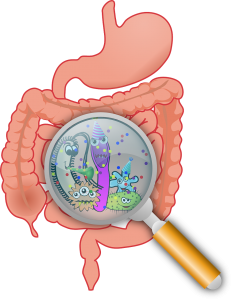

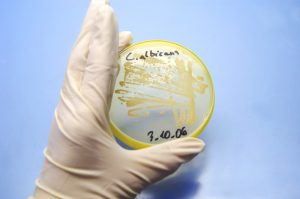 Petri disc with Candida alcicans culture had of scientist holding to evaluate the growth
Petri disc with Candida alcicans culture had of scientist holding to evaluate the growth 